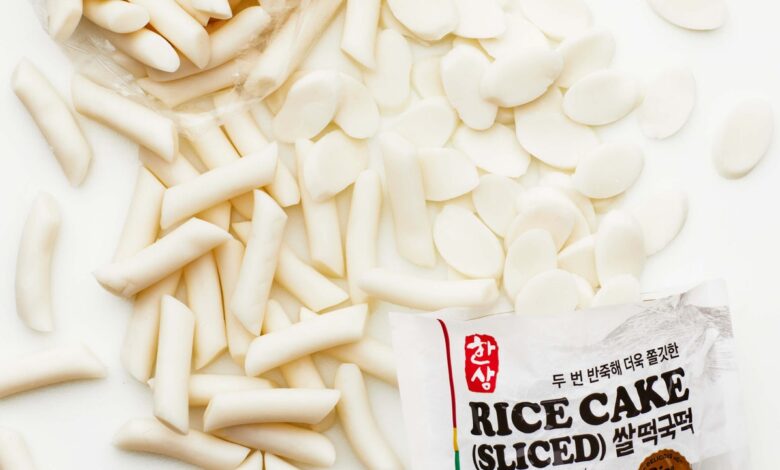
According to Susan Kim, tteok’s texture only improves the longer it spends in a sauce of stew, much like a braise that is better after it rests. “I’ve noticed that the next day, the texture of the tteok changes in a way that I think is truly delicious. It will still be completely structurally intact, but the chewiness and the give of it changes. It’s almost as if the rehydration process continues as it’s submerged in the liquid.”
How is tteok traditionally used?
Tteok is added to soups, stews, and stir-fries, it’s crisped up as a snack or side dish, and it’s the star ingredient of tteokbokki, a spicy, saucy, simmered dish that’s sometimes served with boiled eggs or fish cakes. Variations on the classic tteokbokki include gravy-style curry bases, soy and garlic versions without the gochujang and gochugaru, and the recently popular rose tteokbokki, in which cream turns the sauce pink.
Along with tteok, this tteokbokki contains another freezer aisle delight: fish cakes!
Photo by Chelsie Craig, food styling by Kat Boytsova
Tteok can also be made into sweet applications, especially for children. Kwak describes dessert versions as “sautéed in sesame oil and sprinkled with a little sugar—it’s crispy, chewy, and soft inside, and kids love it. Or you can cover it with honey, maple syrup, or a sweet red bean sauce.”
How else can I cook with tteok?
“Tteok is such an essential part of Korean food, but it can really be used whenever we think of an ingredient as a vehicle, in anything rice- or pasta-based,” says Jennifer Kim. The “most popular dish on the menu by far” at Passerotto was the tteok lamb ragu, a play on traditional tteokbokki that featured lamb necks braised in an Italian-style sauce and plenty of shaved cheese. Meaty pasta sauces, cheese sauces, and even pestos play well with tteok, which makes a useful pasta alternative because it’s naturally gluten-free (though some store-bought varieties do contain wheat starch, so be sure to check the ingredient list). It’s “just another reason why people [who didn’t grow up with it] might start to cook tteok more often at home,” Kwak says. Plus, she notes, “Asian people like the chew in food. We’re not so into things that melt in your mouth, that’s a very Western thing. So the fact that tteok is a different texture to introduce to non-Korean dishes, that’s great. That’s what makes it interesting.”





